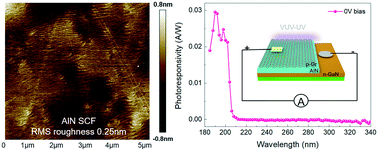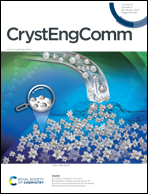In-plane enhanced epitaxy for step-flow AlN yielding a high-performance vacuum-ultraviolet photovoltaic detector†
Abstract
Vacuum ultraviolet (VUV) photodetection has great application prospects in the fields of space exploration, environmental science and biomedicine. In this work, we will present VUV-sensitive AlN single crystalline films (SCFs) with low defect density, grown by our independently designed in-plane enhanced hetero-epitaxial method. By combining the as-grown films with p-type graphene (p-Gr) serving as a transparent conductive layer, a VUV photovoltaic detector with a p-Gr/i-AlN/n-GaN structure was constructed. At zero bias, the detector exhibits an ultrafast response time of 2.86 μs, which is 2 orders of magnitude faster than that of a previously reported h-BN photoconductive detector. Besides, it also has an ultra-high photovoltage of 2 V and an excellent spectral selectivity. The results have demonstrated that the in-plane enhanced epitaxy strategy is expected to provide reference for the preparation of high-quality AlN and to promote the development of VUV detectors in deep space science.



 Please wait while we load your content...
Please wait while we load your content...